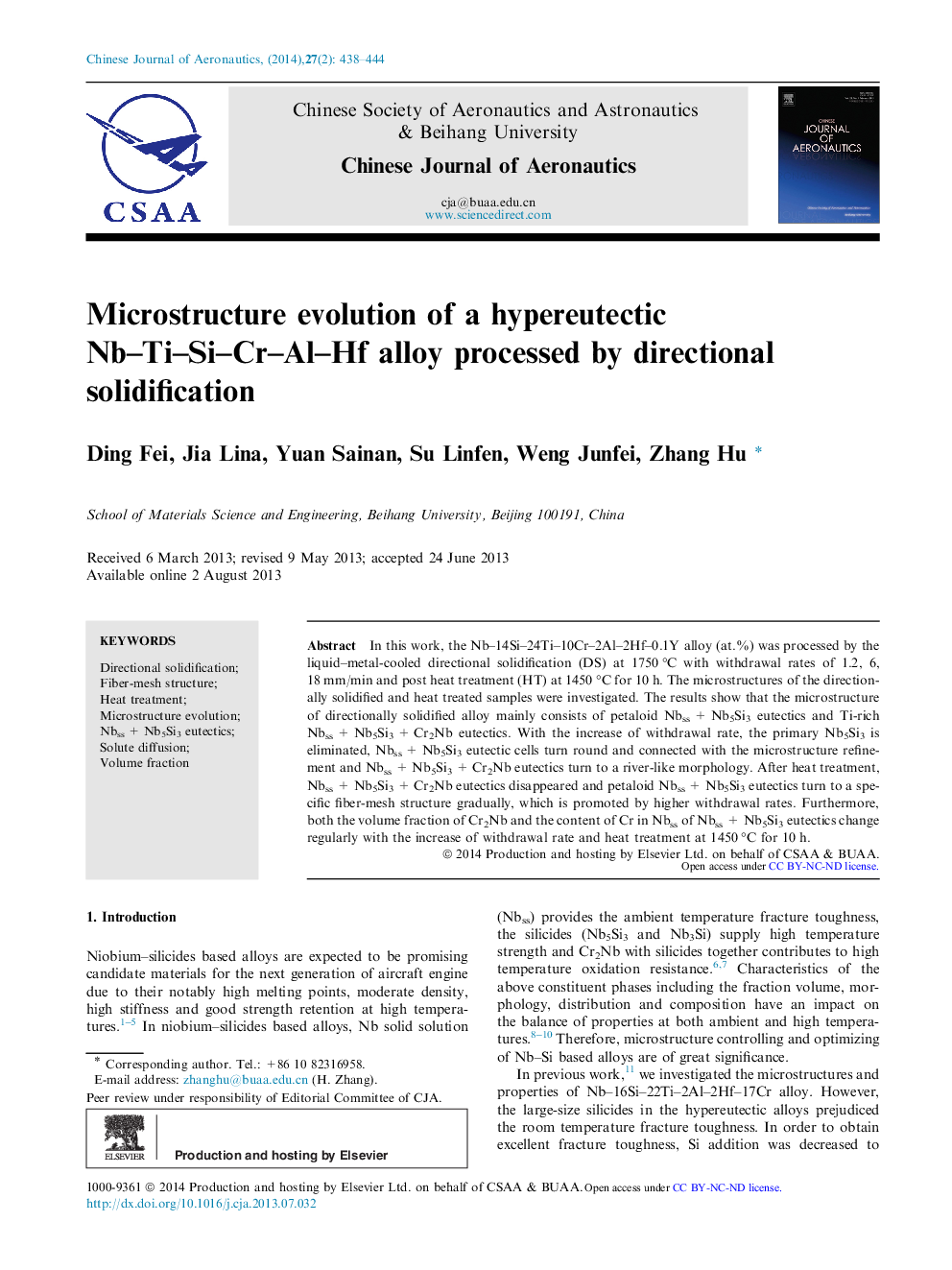| Article ID | Journal | Published Year | Pages | File Type |
|---|---|---|---|---|
| 757425 | Chinese Journal of Aeronautics | 2014 | 7 Pages |
In this work, the Nb–14Si–24Ti–10Cr–2Al–2Hf–0.1Y alloy (at.%) was processed by the liquid–metal-cooled directional solidification (DS) at 1750 °C with withdrawal rates of 1.2, 6, 18 mm/min and post heat treatment (HT) at 1450 °C for 10 h. The microstructures of the directionally solidified and heat treated samples were investigated. The results show that the microstructure of directionally solidified alloy mainly consists of petaloid Nbss + Nb5Si3 eutectics and Ti-rich Nbss + Nb5Si3 + Cr2Nb eutectics. With the increase of withdrawal rate, the primary Nb5Si3 is eliminated, Nbss + Nb5Si3 eutectic cells turn round and connected with the microstructure refinement and Nbss + Nb5Si3 + Cr2Nb eutectics turn to a river-like morphology. After heat treatment, Nbss + Nb5Si3 + Cr2Nb eutectics disappeared and petaloid Nbss + Nb5Si3 eutectics turn to a specific fiber-mesh structure gradually, which is promoted by higher withdrawal rates. Furthermore, both the volume fraction of Cr2Nb and the content of Cr in Nbss of Nbss + Nb5Si3 eutectics change regularly with the increase of withdrawal rate and heat treatment at 1450 °C for 10 h.
